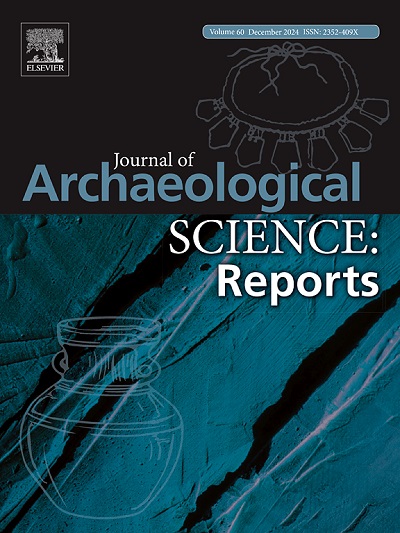Bone refits and spatial analyses of units A5-A6 of Fumane cave contribute to reconstructing the dynamics of Neanderthal use of space
IF 1.5
2区 历史学
0 ARCHAEOLOGY
引用次数: 0
Abstract
This paper presents an initial spatial examination based on the refitting of animal bones scattered in late Middle Palaeolithic units A5 and A6 of Fumane Cave (Verona, Italy), intending to understand past activities and space organisation developed by Neanderthals. The analysed sample includes 4,234 bone fragments, of which 50 sets of refits were horizontally assembled, and 4 refits documented a vertical connection between units A5 + A6 and A6. The study highlights a preponderance of short connections, suggesting that bone fragments mainly remain in their original position, although some refits are documented at medium or long distances. These patterns indicate that the distribution is primarily due to human actions resulting from repeated short-term occupations. Moreover, the scarce evidence of natural modifications in this assemblage suggests that post-depositional agents could not have moved bones on medium or long distances. Applying bone refits, multivariate statistical techniques and GIS tools, it was possible to identify different bone accumulations on the cave’s east wall that are unrelated to hearths zones. The analysis of these units and the comparison with bone refits documented at unit A9 of Fumane Cave and with other sites can significantly contribute to the knowledge of the intra-site behaviour, helping to interpret variability in Middle Palaeolithic occupational patterns.
Fumane洞穴A5-A6单元的骨骼修复和空间分析有助于重建尼安德特人使用空间的动态
本文通过对意大利维罗纳富曼洞穴(Fumane Cave, Verona, Italy)中旧石器时代晚期A5和A6单元中散落的动物骨骼进行改造,提出了一项初步的空间检查,旨在了解尼安德特人过去的活动和空间组织。分析的样本包括4234块骨碎片,其中50组是水平组装的,4组记录了A5 + A6和A6单元之间的垂直连接。该研究强调了短连接的优势,这表明骨碎片主要保持在原来的位置,尽管有些修复是在中远距离上记录的。这些模式表明,这种分布主要是由于重复的短期职业造成的人类活动。此外,这一组合中自然变化的稀少证据表明,沉积后的因素不可能使骨骼进行中距离或长距离的移动。利用骨骼修复、多元统计技术和地理信息系统工具,有可能识别出洞穴东墙上与壁炉区无关的不同骨骼堆积。对这些单位的分析,以及与富曼洞穴A9单位和其他地点记录的骨骼修复的比较,可以为了解遗址内的行为做出重大贡献,有助于解释旧石器时代中期职业模式的多样性。
本文章由计算机程序翻译,如有差异,请以英文原文为准。
求助全文
约1分钟内获得全文
求助全文
来源期刊

Journal of Archaeological Science-Reports
ARCHAEOLOGY-
CiteScore
3.10
自引率
12.50%
发文量
405
期刊介绍:
Journal of Archaeological Science: Reports is aimed at archaeologists and scientists engaged with the application of scientific techniques and methodologies to all areas of archaeology. The journal focuses on the results of the application of scientific methods to archaeological problems and debates. It will provide a forum for reviews and scientific debate of issues in scientific archaeology and their impact in the wider subject. Journal of Archaeological Science: Reports will publish papers of excellent archaeological science, with regional or wider interest. This will include case studies, reviews and short papers where an established scientific technique sheds light on archaeological questions and debates.
 求助内容:
求助内容: 应助结果提醒方式:
应助结果提醒方式:


